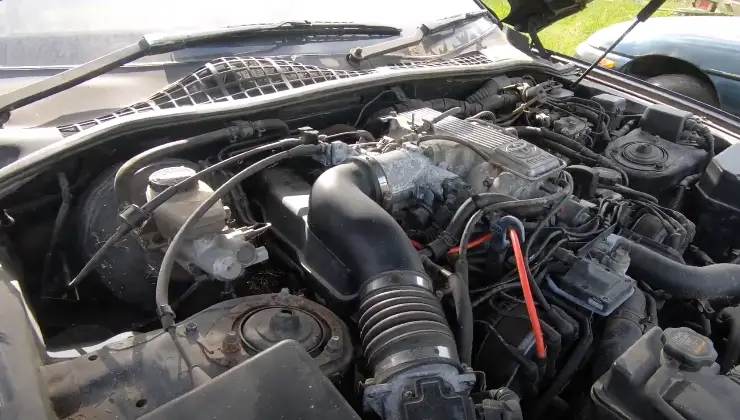Driving a vehicle without a properly functioning brake system is dangerous, not only for yourself but also for those around you. A car’s braking system is critical to ensuring your safety on the road, and the brake booster vacuum hose is an essential component of that system. In this article, we will discuss the importance of the brake booster vacuum hose to carburetor connection, how it works, and why it is crucial to maintain it for your vehicle’s safety.
Contents
What is a Brake Booster Vacuum Hose?
A brake booster vacuum hose is a crucial component in a vehicle’s brake system. It is responsible for creating a vacuum that helps to amplify the force exerted by the driver on the brake pedal. This vacuum is created by the engine’s intake manifold, which draws in air through the carburetor. The brake booster vacuum hose connects the intake manifold to the brake booster, allowing the vacuum to be used to increase the pressure applied to the brake pads.
How Does the Brake Booster Vacuum Hose Work?
The brake booster vacuum hose is a simple yet essential component of the brake system. When the driver presses the brake pedal, it activates the brake booster. The brake booster is a device that amplifies the force applied to the brake pedal, making it easier to stop the vehicle. The brake booster does this by using the vacuum created by the engine to increase the pressure applied to the brake pads.
When the driver presses the brake pedal, a valve opens in the brake booster, allowing the vacuum to be applied to the diaphragm inside the booster. This diaphragm then moves, pushing a rod that is connected to the master cylinder. The master cylinder is responsible for applying hydraulic pressure to the brake pads and stopping the vehicle.
Why is the Brake Booster Vacuum Hose Connection Important?
The connection between the brake booster vacuum hose and the carburetor is crucial to the proper functioning of the brake system. If this connection is damaged, the vacuum that is necessary for the brake booster to function correctly will be lost, making it more difficult to stop the vehicle. In addition, a leak in the brake booster vacuum hose can cause the engine to run poorly, affecting the vehicle’s performance.
Signs of a Damaged Brake Booster Vacuum Hose Connection
There are several signs that the brake booster vacuum hose connection may be damaged or not functioning correctly. These include:
Difficulty stopping the vehicle: If the brake system is not functioning correctly, you may experience difficulty stopping the vehicle, even when applying the brakes with force.
Soft brake pedal: A damaged brake booster vacuum hose can cause the brake pedal to feel soft or spongy, making it difficult to apply the necessary pressure to stop the vehicle.
Engine performance issues: A leak in the brake booster vacuum hose can cause the engine to run poorly, affecting the vehicle’s performance.
Vacuum leaks: If you notice a hissing sound coming from the engine, it may be a sign of a vacuum leak, which can be caused by a damaged brake booster vacuum hose connection.
How to Maintain the Brake Booster Vacuum Hose Connection
Maintaining the brake booster vacuum hose connection is critical to the proper functioning of the brake system. Here are some tips on how to maintain this connection:
Inspect the connection regularly: Check the brake booster vacuum hose connection for signs of damage, such as cracks or tears. If you notice any damage, replace the hose immediately.
Replace the hose regularly: Brake booster vacuum hoses should be replaced every few years, or as recommended by the vehicle’s manufacturer.
Use the correct hose: It is essential to use the correct brake booster vacuum hose for your vehicle. Using the wrong hose can cause damage to the brake system and affect the vehicle’s safety.
Ensure proper installation: When replacing the brake booster vacuum hose, make sure it is installed correctly and securely to prevent any leaks.
Check for vacuum leaks: Regularly check for vacuum leaks by listening for any hissing sounds coming from the engine. If you suspect a leak, have it repaired immediately to prevent any safety issues.
Conclusion
The brake system is a critical component of any vehicle, and the brake booster vacuum hose to carburetor connection plays a crucial role in its proper functioning. Maintaining this connection is essential to ensure your safety on the road.
Regularly inspecting and replacing the brake booster vacuum hose, using the correct hose, and ensuring proper installation can help prevent any safety issues caused by a damaged connection. By taking these simple steps, you can ensure that your vehicle’s brake system is functioning correctly and keeping you safe while driving.
